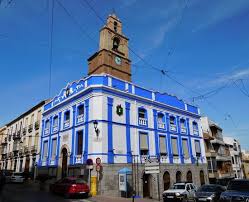
It is placed to an altitude of 635 meters and to 94 kilometers from the capital of the province, Cordova.
Rute's villa places to the southwest of the province of Cordova, in what it might be considered to be the "heart" of Andalusia and of the nature reserve of It Saws SubAndalusian Cordobesas.
Rute the Old man, of whom still his ruins remain, arose in the first decades of the 13th century, as a strength constructed by the Arabs in the Saw with the defensive mission and belonged to the Kingdom Nazarí of Granada. It was conquered by means of capitulation concerning 1240 by Fernando III, who donated it to the advice of Cordova.
His frontier character with the neighbor Reino Nazarí of Granada did his very unstable situation: did The Infante Pedro of Castile, brother of Fernando IV of Castile, turn it to conquering in 1313.1? Later, he would be Alfonso XI of Castile who took it in 1341. It recovers her definitively for the Christians Juan II in 1433, who grants it in dominion to his mild Ramiro Yáñez de Barnuevo. Since it is estimated, it is known closely as the year of the Christian conquests so the kings and infants were using the chronicles to increase his prestige before his subjects. For it also, they were less prolific with the conquests nazaríes.
In the civil war between Enrique IV and the Infante Don Alfonso (1465-68), the master of Rute it supported the latter, for what the monarch revoked the donation granting to Diego Fernandez of Cordova, master of Baena and the first Count of Goat, for the help given in Écija's capture, dynasty that would exercise an almost absolute power in the locality along the Modern Age.
In the first periods of the 16th century, Rute was formed in his current emplacement, remaining left since then the former population and the first neighborhoods of the current one being raised in a slightly less steep and torturous place than that of the primitive strength.
From this moment it began the local repopulation and the movement of Rute Old to his current location, which would assemble better conditions due to the evil been of conservation of the former strength by the continuous assaults of Christians and Muslims.
They stand out: The Church of Holy Catalina, Museum of the Anise, Museum of the Cured Ham and Museum of the Sugar.

0 Reviews